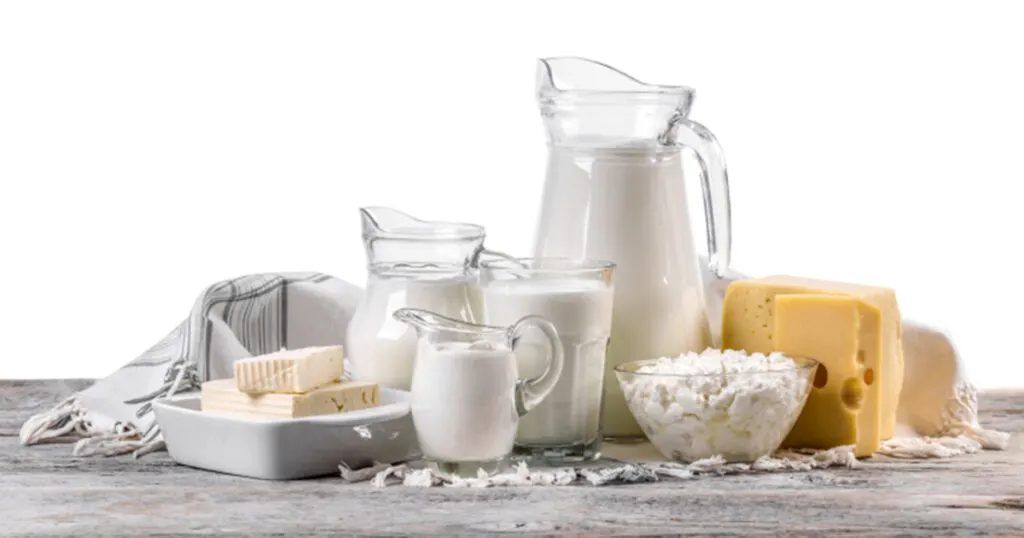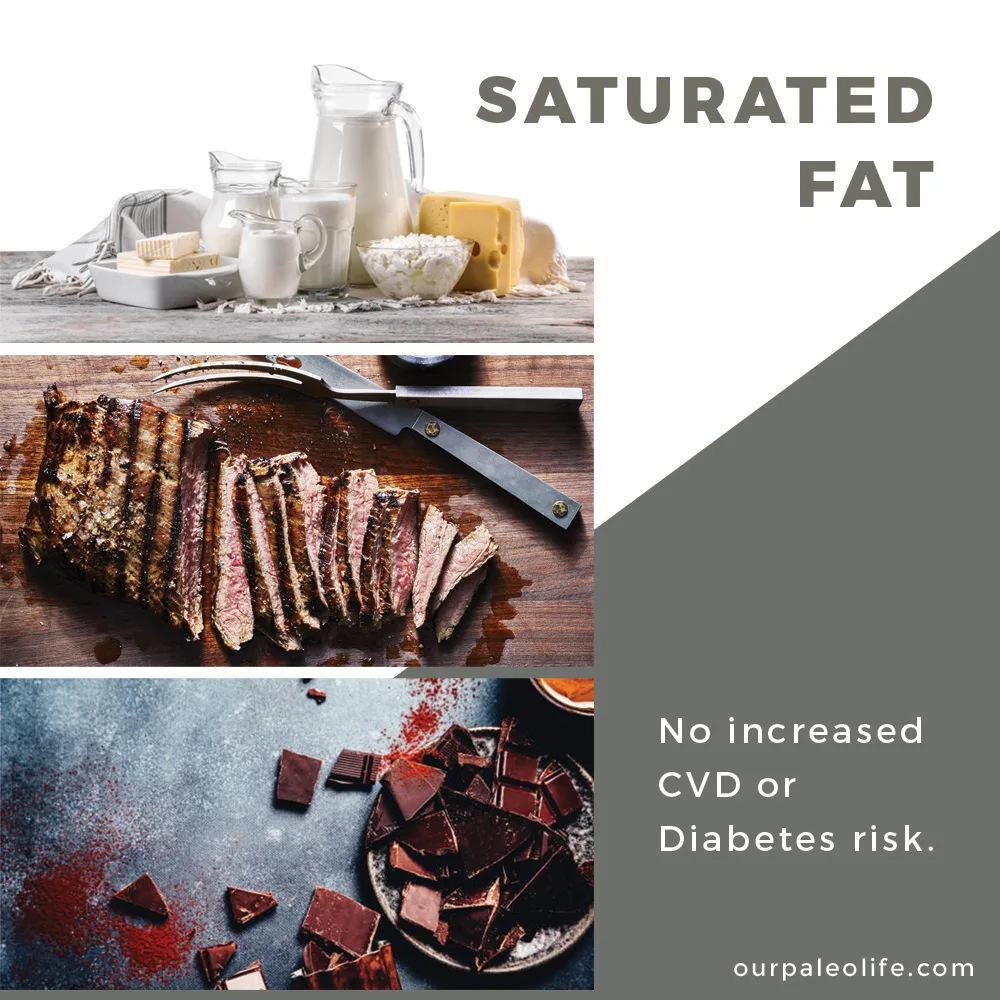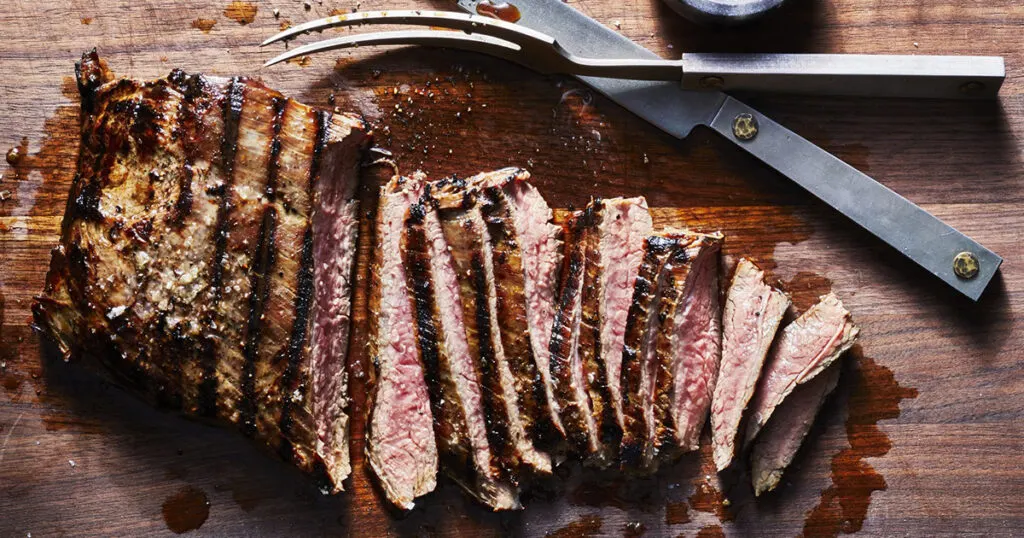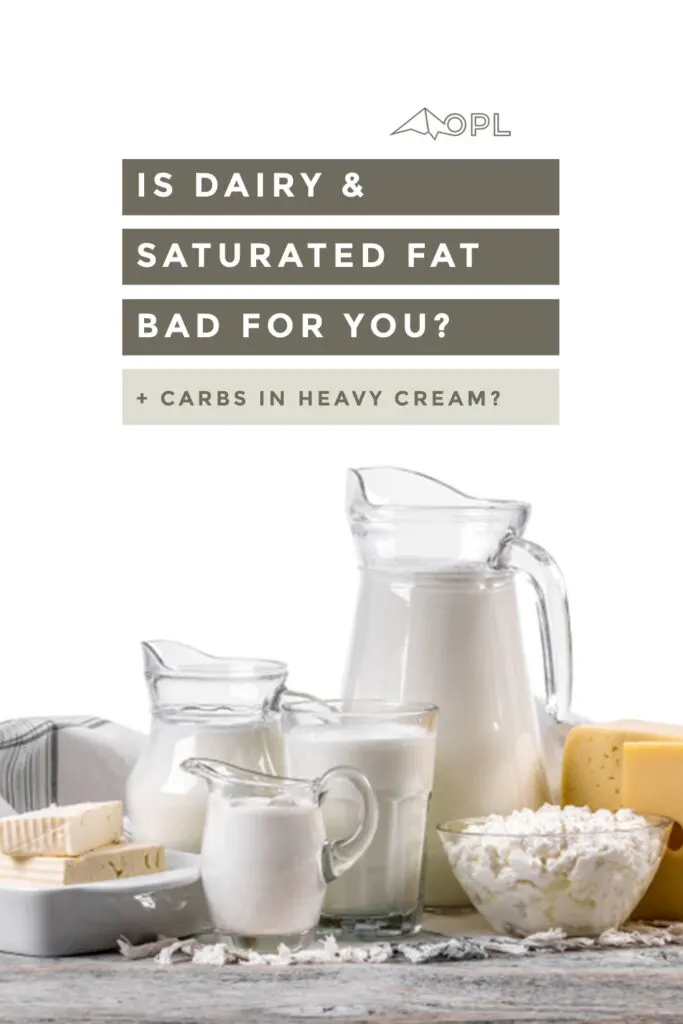If you’re wondering what the deal is with saturated fat, if dairy is bad for you, and just how many carbs are in heavy cream, keep reading. This post clears up a lot of misinformation in relation to saturated fat and dairy.

If you’re on a ketogenic diet you’ve been looking at labels, trying to gauge if something will impact ketone levels. When it comes to dairy, there’s been years of debate; there are so many different dairy products, and they shouldn’t be treated the same. Is dairy good for your gut? Will consuming too much dairy cause health issues? Are dairy products safe to consume? How many carbs are in heavy cream? Is dairy good on a Keto Diet?
Recent Study Promotes High Fat Dairy Consumption
Recently a study in Sweden found that dairy IS NOT a contributor to cardiovascular disease. In fact, this recent study highlights that it’s possible that high fat consumption from dairy may lower your risk of heart disease.
The study assessed dairy fat intake in 4,150 Swedes; all about 60-years old. The study measured the blood concentration of certain fatty acids found in dairy (and foods containing dairy). The study authors followed the participants for about 16 years (on average) and recorded how many died or had heart attacks, strokes, and other cardiovascular conditions. source
Overview of Dairy & Cardiovascular Disease Findings
- Cardiovascular disease risk was the lowest for participants who had high levels of the dairy fatty acids.
- Evidence suggests that the health impact of dairy foods is more dependent on the type (e.g., cheese, yogurt, milk, and butter) rather than the fat content, which has raised doubts if avoidance of dairy fats is beneficial for cardiovascular health.
- With an account of all known risk factors including demographics, lifestyle, and disease prevalence: the CVD risk was lowest for those with high levels of the dairy fat biomarker 15:0.
- They also conducted a systematic review and meta-analysis, and the combined evidence from 18 studies also showed higher levels of 2 dairy fat biomarkers (15:0 and heptadecanoic acid 17:0) were linked with lower risk of CVD
This 2021 study isn’t the only data pointing to dairy consumption and reduced risk of CVD. Prior to this study in 2021, we have data from a 2018 study indicating similar results. From the 2018 study: “Dairy consumption was associated with lower risk of mortality and major cardiovascular disease events in a diverse multinational cohort.” source
A lot of the disagreement in the health world when it comes to dairy and meat revolve around: saturated fat. Saturated fat has been demonized for awhile now. The demonization typically originates from those endorsing an “animal free” diet – ie: vegans and vegetarians. While their intentions are good, the data in support of avoiding saturated fat is suspect, lacking, and misleading.

Saturated Fat Explained
Dietary fat plays an important role in the human body and consumption may lead to a variety of health outcomes. The debate rages on in relation to what those health outcomes are. Dietary fat is broken down into three main categories: saturated fats, unsaturated fats, and trans fat. Fat is made up of carbon, hydrogen, and oxygen molecules.
Saturated fats are saturated with hydrogen molecules and contain only single bonds between carbon molecules. Unsaturated fats have at least one double bond between carbon molecules.
This saturation of hydrogen molecules results in saturated fats being solid at room temperature, unlike unsaturated fats, such as avocado oil, which is liquid at room temp.
There are different types of saturated fats. It all depends on the carbon chain length, including short-, long-, medium-, and very-long-chain fatty acids.
Saturated fats are found in animal products like milk, cheese, and meat. Saturated fat is also found in tropical oils like coconut oil.
Examples of Food with Saturated Fat

There are 6g of saturated fat in 100g of beef.

There are 21g of saturated fat in 100g of cheese.

There are 19g of saturated fat in 100g of dark chocolate.
Health Guidance & Saturated Fat
Looking at health guidance in the United States: 1977 Low Fat Diet recommendations were introduced. Mid 1980’s the market is starting to get saturated with low carb products. Eating habits, advice, and outlook made a massive shift away from: saturated fat.
Demonization of Saturated Fat (Is it warranted?)
Since the 1970’s the United States “health experts” have concluded that consuming saturated fat is an unhealthy practice that may lead to heart disease. This concept has been based on the observation in experimental trials replacing saturated fat with unsaturated fat. These studies demonstrate that low-density lipoprotein (LDL) and cholesterol itself is linked to heart disease.
When we look at high quality research, it becomes much clearer that saturated fat’s impact on heart disease is more complicated. Considerations:
- Individual response to saturated fat intake varies.
- Overall food consumption plays a larger role (for example: sugar and carbohydrate consumption coupled with saturated fat intake reduces quality of health) Was it the saturated fat or the elevated blood sugar to be blamed?
Saturated Fats and Health: A Reassessment and Proposal for Food-Based Recommendations: “The recommendation to limit dietary saturated fatty acid (SFA) intake has persisted despite mounting evidence to the contrary. Most recent meta-analyses of randomized trials and observational studies found no beneficial effects of reducing SFA intake on cardiovascular disease (CVD) and total mortality, and instead found protective effects against stroke. Although SFAs increase low-density lipoprotein (LDL) cholesterol, in most individuals, this is not due to increasing levels of small, dense LDL particles, but rather larger LDL particles, which are much less strongly related to CVD risk. It is also apparent that the health effects of foods cannot be predicted by their content in any nutrient group without considering the overall macronutrient distribution. Whole-fat dairy, unprocessed meat, and dark chocolate are SFA-rich foods with a complex matrix that are not associated with increased risk of CVD.” source
With all of this in mind, it’s clear that saturated fat is not dangerous. There is no sound data pointing to saturated fat causing heart disease, metabolic syndrome, or insulin resistance. Data > Opinion
Back to our review of Dairy and carbs in dairy:
A Look at Dairy
While I strongly believe saturated fat and dairy are not causing major health issues like CVD, I do believe there is a large group of people who cannot tolerate dairy. For many: gas, bloating, IBS, sinus congestion, and other very real symptoms may increase with regular dairy consumption. If you notice symptoms increase with dairy consumption, don’t consume dairy.
If you don’t suffer from any of these symptoms, you can rest assured that dairy is not silently causing heart disease or pre-diabetes. Consuming dairy is safe and can promote long term positive health outcomes.
Dairy on the Keto Diet
If you’re on a low carb diet, high fat dairy is a great way to keep your dietary fat needs (energy requirements) met. In fact, in light of the recent findings, you may be reducing cardiovascular disease risks when you consume high fat (saturated fat) dairy.
Dairy to Avoid on the Keto Diet
Not all dairy is created equal. There are a lot of products that contain added ingredients that you’re going to want to avoid. If you’re attempting to avoid excess carbohydrate, it’s a good idea to check labels. Here are a few examples of dairy products that you should avoid on the Keto Diet (due to high carb content).
- Milk – much of the milk you buy at the store has 12+ grams of carbs per cup.
- Sorbet, Ice Cream, Frozen Yogurt – most of these products contain upwards of 30g of carbs per 100g.
- Half & Half – 10g of carbs per 100g.
- Yogurt – most yogurt has added sugars and it adds up. 20g+ per serving.
Generally speaking, you’re going to be safe consuming high fat heavy cream and cheese. These options typically contain no added sugars (however: check the label)
Our go-to ingredient for keto baking in our bakery or our at home treats is heavy cream. We love using heavy cream because there are typically no added ingredients.
How many carbs are in heavy cream?
For every 6 grams of fat in heavy cream, there’s slightly less than 1 gram of carbohydate. When using heavy cream, the content needed is typically very small. One cup of heavy cream = 6g of carbohydrate.
In other words: in 120 calories of heavy cream there are 7 grams of saturated fat, 12 grams of total fat, and slightly less than 2 grams of carbohydrates. There is slightly less than 1g of carbohydrate in one serving of heavy cream.
Pin this:

